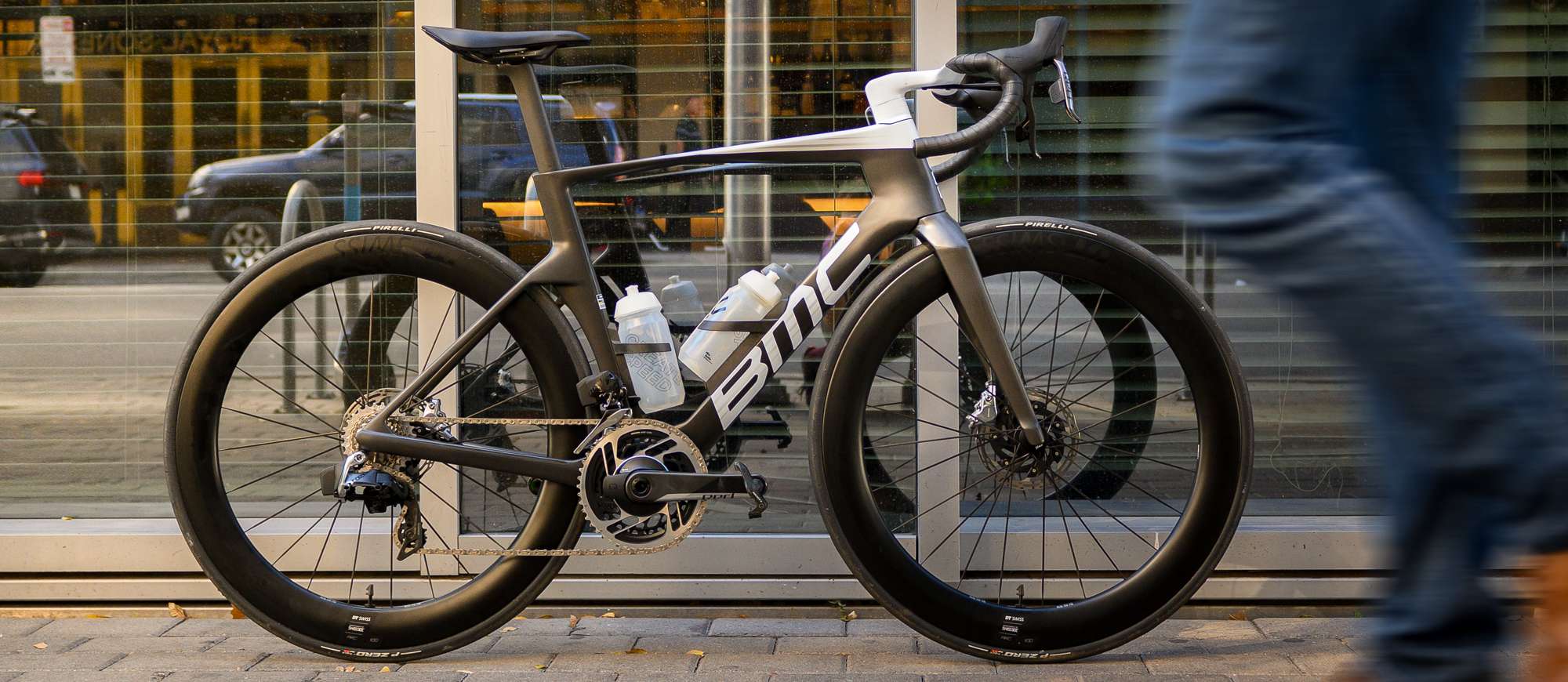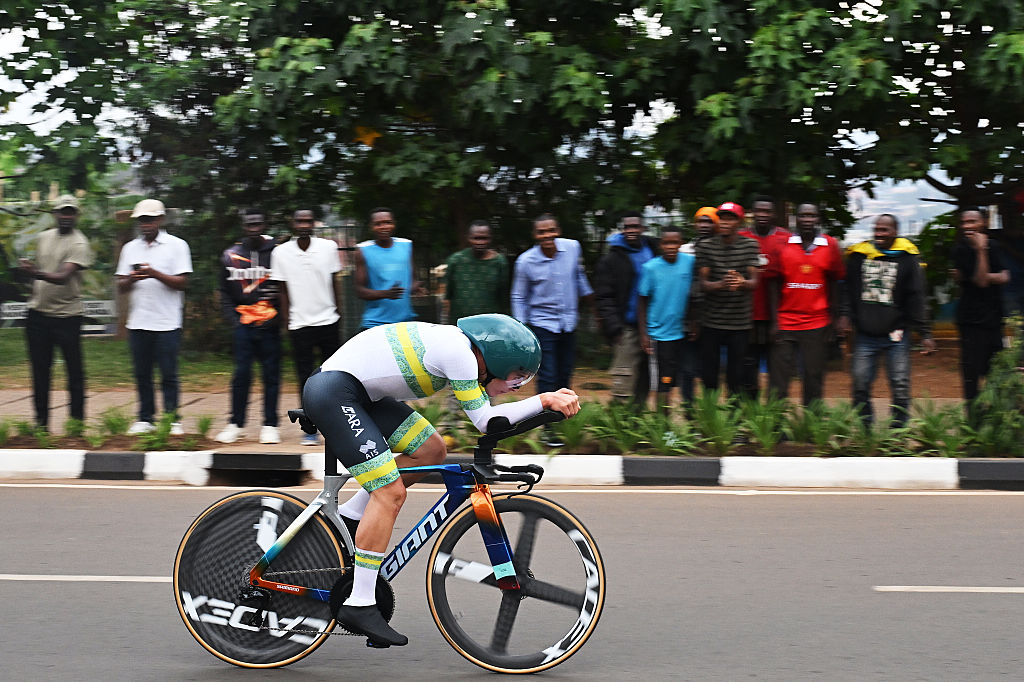Cyclingnews Verdict
For all the talk of partnering with Red Bull Advanced engineering for F1 expertise, the BMC Teammachine R experience seems more like it's dictated by the wheel, tire, and handlebar choice. That said, it comes from the factory with no additional purchases needed, good compliance, and is exceptionally good at steady state fast riding. This is definitely the bike you want for long breakaways.
Pros
- +
Narrow handlebars are smart for aerodynamics
- +
Reasonable compliance
- +
Includes a power meter at every build level
- +
Integrated number plate holder in seatpost
- +
High quality computer mount
- +
Saddle and bottle cages are both high quality pieces
Cons
- -
Included wheels are best for flat and fast
- -
Twitchy handling on the hoods
You can trust Cyclingnews
There are bikes that exist on the walls and in the minds of dreamers of all ages. These are the very best of what's available today. We've got them on our list of the best road bikes and you see them in the WorldTour but what's it like to ride one and how do they compare? I've been lucky enough to ride a few of them and, as the summer comes to a close, I've now added the BMC Teammachine R to the list.
Price: €14999 / $14999
Frame: Teammachine R 01 Premium Carbon with Aerocore Design
Size: 54
Weight: Frame - 910 g, Fork - 395 g, Seatpost - 155 g, ICS Carbon Aero Cockpit - 315g
Groupset: SRAM RED AXS with power meter
Wheels: DT Swiss ARC 1100 62mm
Brakes: SRAM RED eTap AXS
Bar/stem: ICS Carbon Aero Cockpit (internal routing/integrated bar and stem)
Saddle: Fizik Argo Vento R1 (140mm)
The BMC offering is a bit different though. Unlike Cannondale with Lab71 or Specialized with S-Works, the Teammachine R isn't just a top-spec build. The Teammachine R is a unique model in the BMC lineup with a range of builds at different price points. From afar it might look similar to the previous range topping Teammachine SLR but the two bikes will continue to exist in parallel. The SLR is now considered the altitude bike with a slight weight advantage while the Teammachine R gets the "ultimate race bike" tagline.
BMC also stands apart because the brand didn't develop the bike alone. While you might think of BMC as a major brand, the resources BMC designers have at their disposal still pale in comparison to the budget of an F1 team. As a way to get access to those resources, and a different point of view, BMC partnered with the Red Bull Advanced Engineering Team. That means whatever you might think about the BMC Teammachine R, it's unique.
Despite its reputation for being an engineering-forward company, there's still a bit of an art to designing a bike worth riding. Did BMC hit the mark? How does the Teammachine R compare to other top shelf bikes? Those are the questions I put to the test while riding in Austin, Texas, on an F1 weekend and here's what I found.
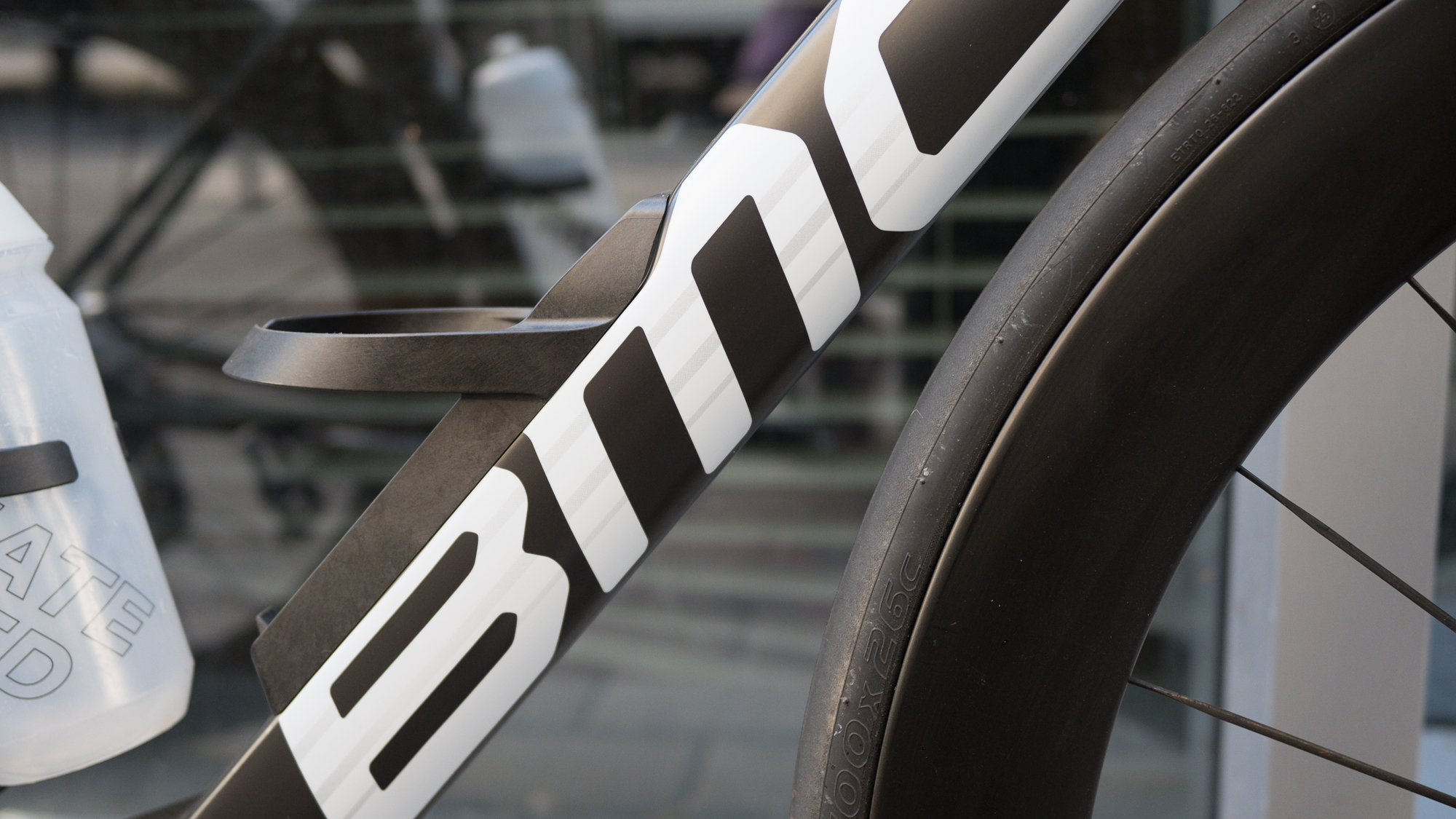
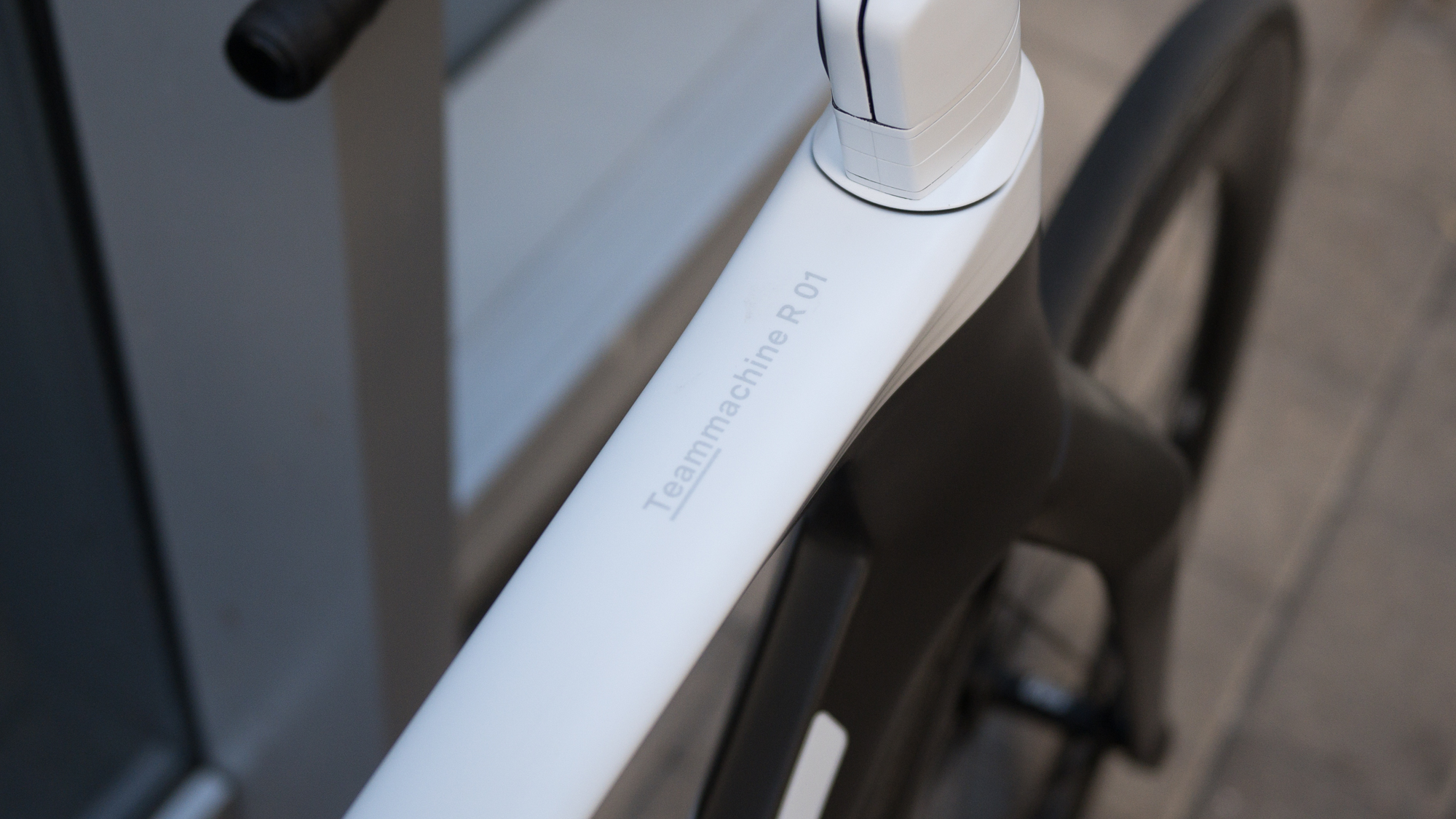
Design and aesthetics
As I said up above, you might think of bike brands as being major companies but in the scheme of things most are very small. The BMC brand has only existed since 1994 and even within the realm of bike companies, BMC is not a big company. Those facts matter because it limits the available resources. It's one thing to hang a brand's hat on an identity of science and engineering but it's another thing to actually execute that on a reasonable budget.
The reality is that even in 2023 developing an aerodynamic machine is resource intensive. Wind tunnels are only still in use because they are cheaper than computing. At this point computer modelling and 3D scanning would allow for far more precise and repeatable testing but it still requires computing power that's outside the reach of small companies. Bike brands will tell you that they head to the wind tunnel to verify results, and that's true, but it's far more about not being able to model everything.
In this case, BMC looked for a way to partner with a brand that had both the expertise and computing power to do more modelling and exploration. Red Bull Advanced Engineering (or RBAT) is the brand that emerged as a partner.
The latest race content, interviews, features, reviews and expert buying guides, direct to your inbox!
RBAT offers design and engineering as a service but the brand's main gig is designing and racing F1 cars. Budgets are enormous, there's computing power to spare, and it's hard to compete with the money and prestige that comes along with building the fastest race cars on the planet. Carbon fibre expertise and aerodynamic knowledge are plentiful, and running simulations isn't an issue.
With all this in mind, BMC approached RBAT and asked for help. Starting with a blank slate, RBAT looked at how to shape a bike to make it the most aerodynamic possible. Then, with shapes in mind, RBAT ran more simulations and focused on how to arrange the carbon for strength, power transfer, and weight. The result is a Teammachine R that is 19% faster than the Teammachine SLR without a rider and 3.5% faster with a rider. A bike that is 1.9% (with a rider) more aerodynamic than the Timemachine while still saving 120 grams throughout the frame, fork, and seatpost.
BMC is quick to point out though that this was a collaboration not a one-way transfer of knowledge and a purchased design. RBAT knows how to build carbon and shape it into an aero shape but the group's expertise is with one-off designs, winning at all costs, and no concern for budgets. BMC had to take the designs generated and figure out how to actually build them at scale and for a reasonable price. It was also important to keep the brand DNA that makes a BMC recognizable as a BMC.
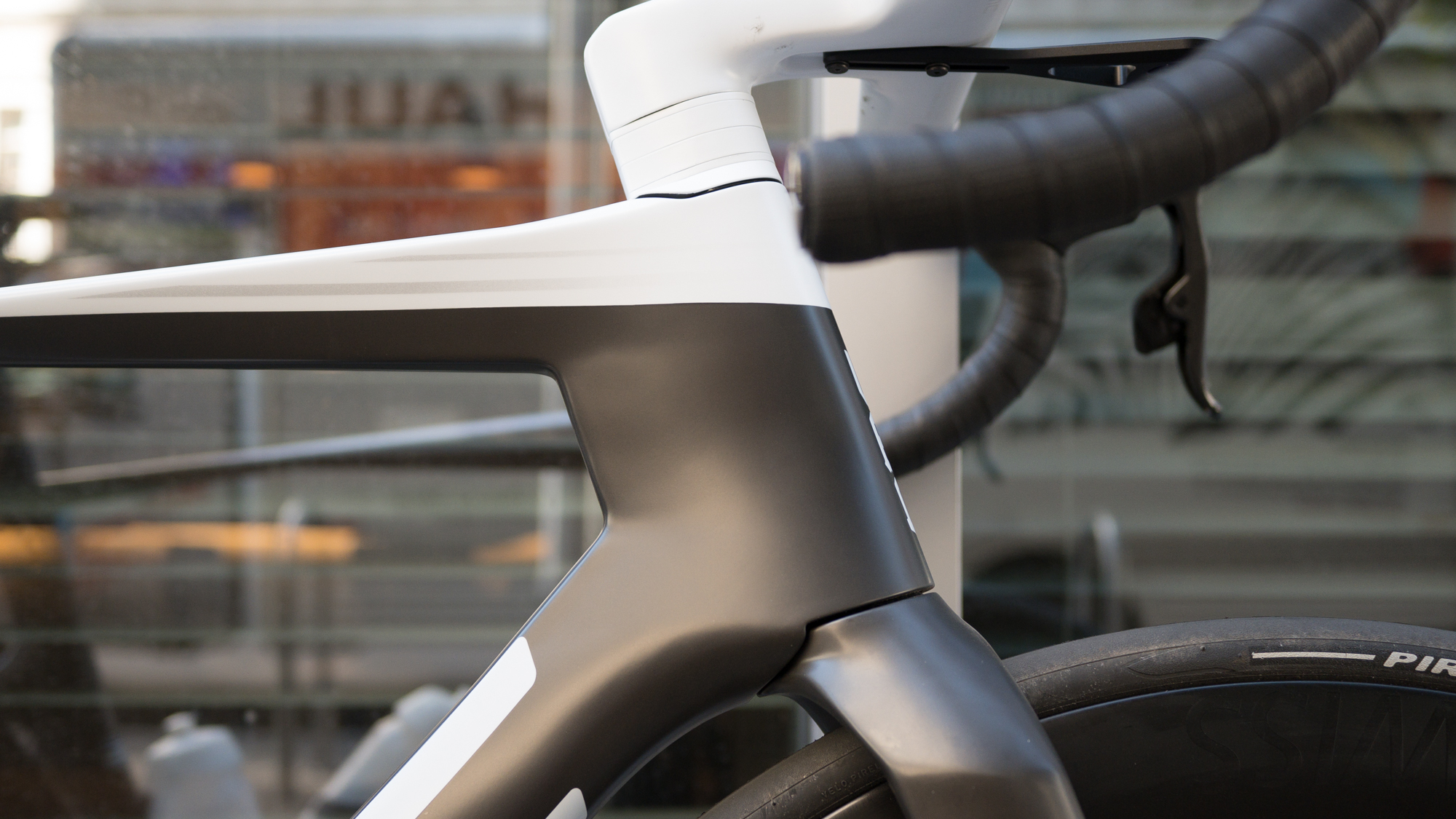
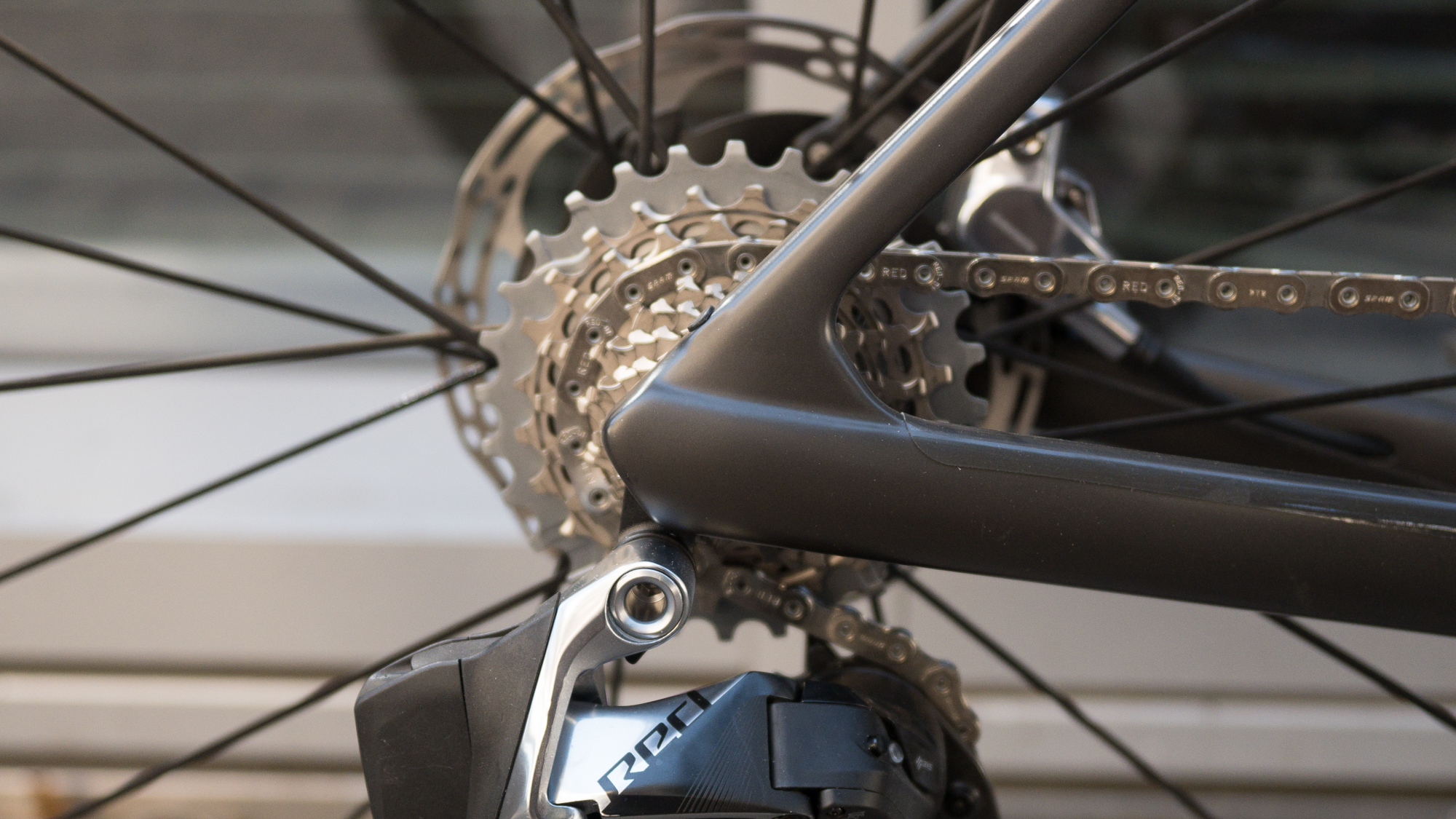
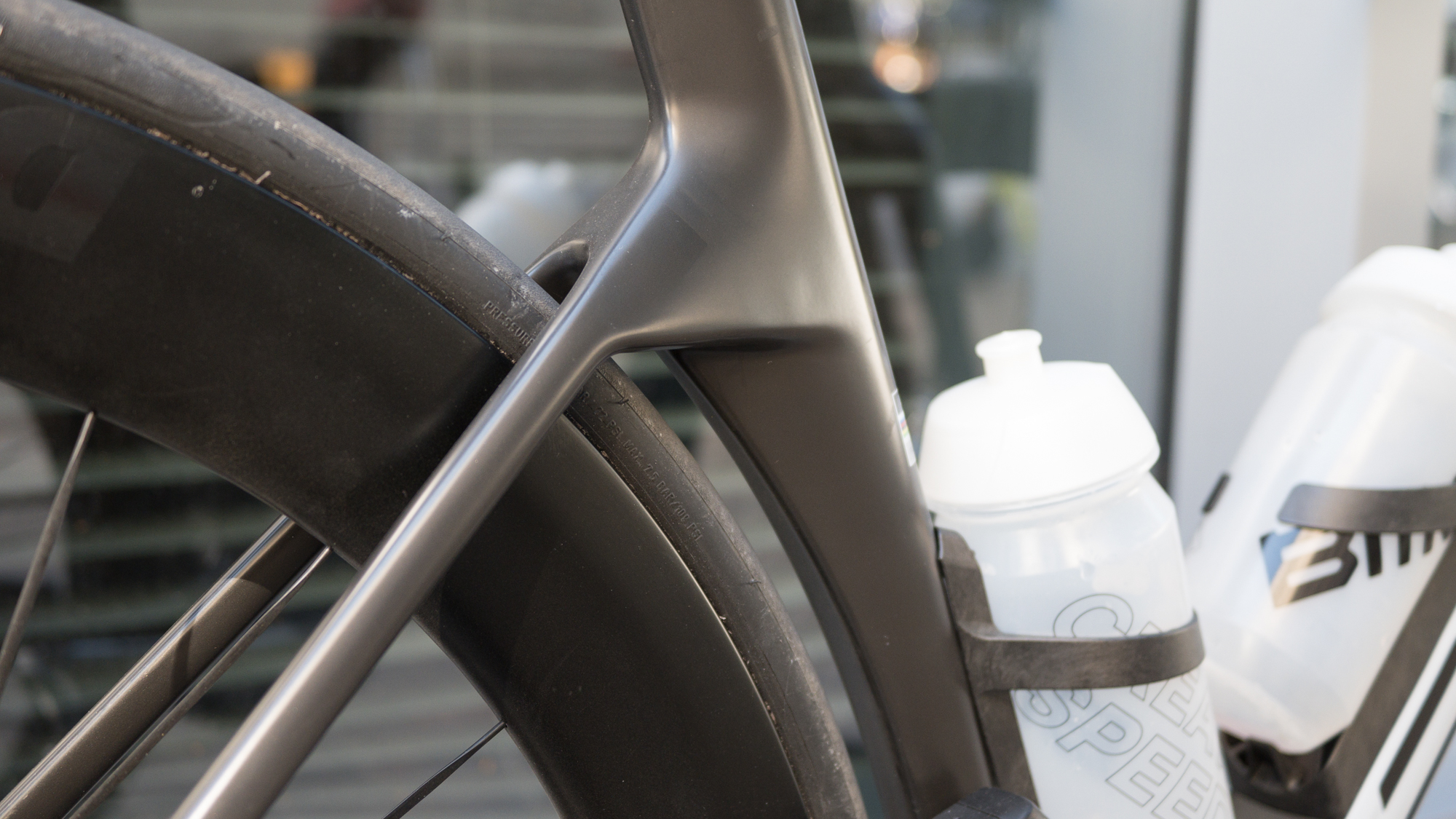
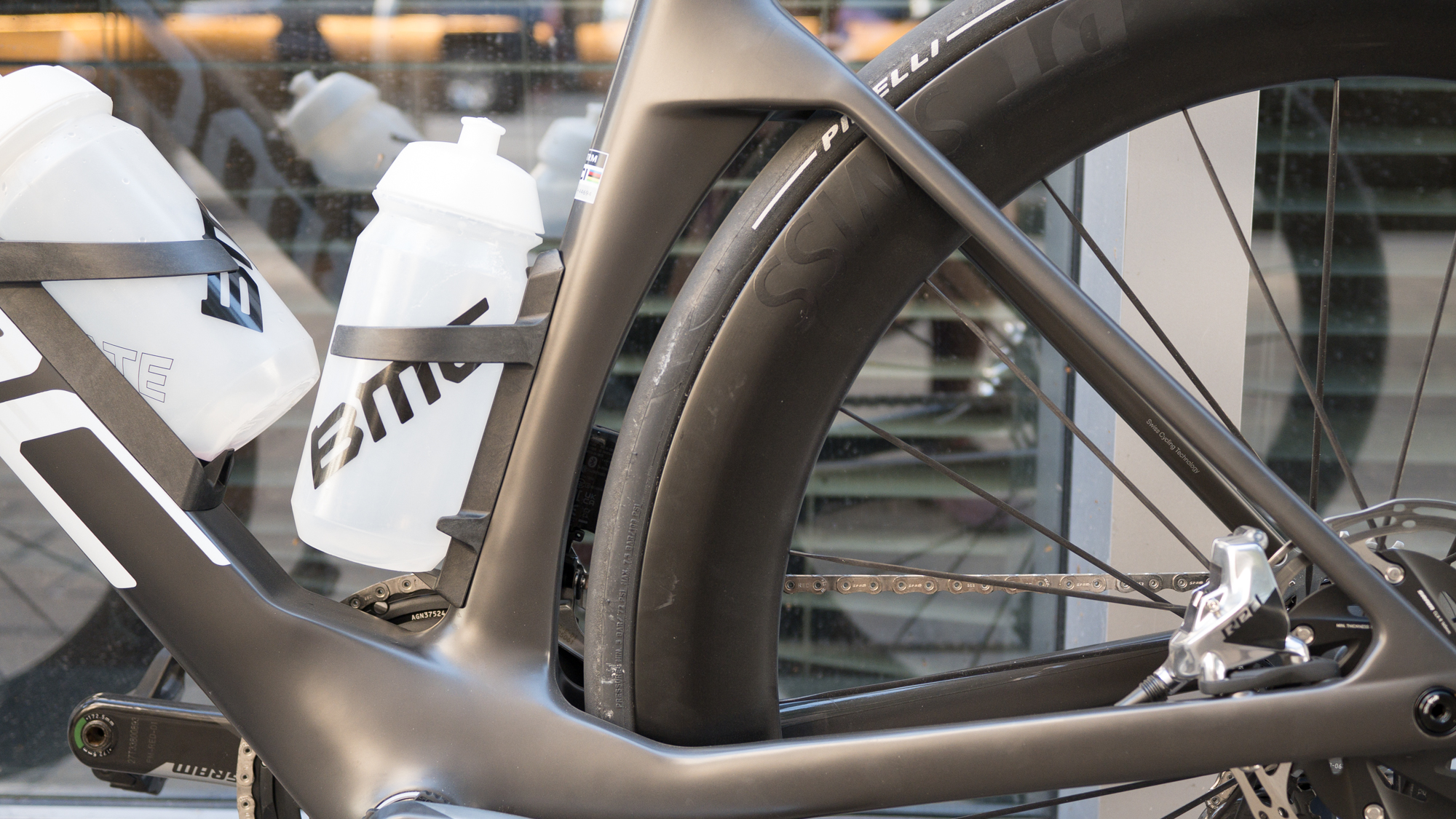
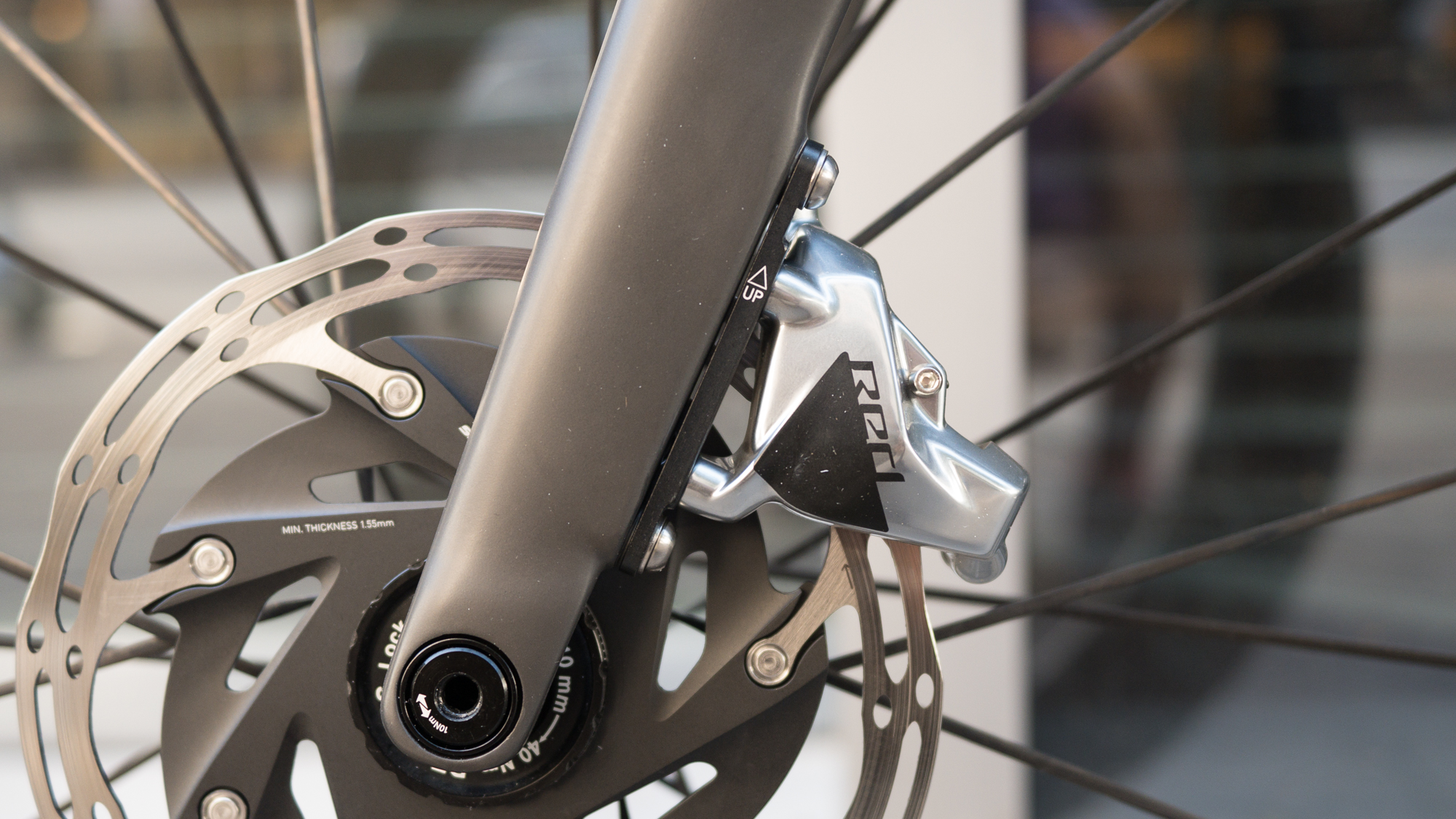
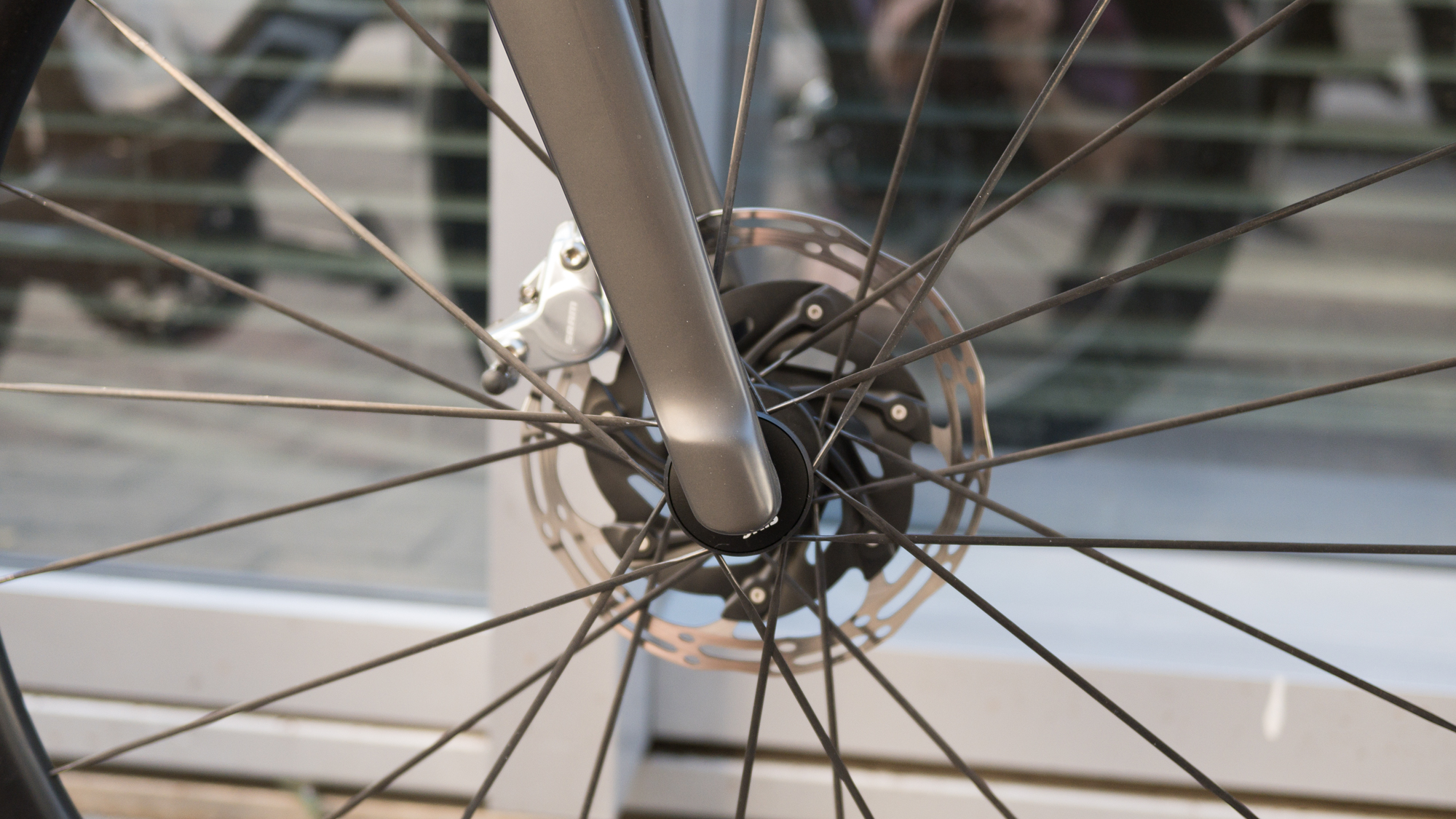
The final design ended up pushing the UCI rules to the limit in some places, bringing in some new ideas, and employing some of what we've seen previously from BMC in other places. In terms of the UCI limits, you'll notice the headtube is the new max depth. Then, for things we've seen previously, there's the same 36cm wide one piece stem and handlebar design I rode previously on the BMC Kaius 01 One. You'll also find the same paint black and white paint scheme available on the top build specs of the Timemachine and the Teammachine SLR frameset. The "Aerocore" aerodynamic bottle cage system is also something we've seen previously though the one on the Teammachine R is a slightly different design.
To find the new designs , you'll want to start with the "Halo fork." The name is a reference to the Halo safety device found on F1 cars which happens to bear a striking resemblance to the BMC fork. Looks are where the two designs part ways though. BMC explained that the spinning of the wheel creates turbulent air. To deal with that air you either needed to get the fork as close as possible or widen it out. In this case, given the realities of riding a bike with a max tire clearance of 30mm on public roads, BMC went wide.
BMC also went wide, or at least big, with the "Mariana Bottom Bracket." Which, despite the fancy name, is just a big and bulbous design for a PF86 bottom bracket. Instead of draping the carbon over the minimum internal shape needed, BMC created a shape that smooths the airflow in the area. I'd imagine it also aids in power transfer or stiffness though nothing was specifically mentioned.
The seatpost is also new though I'd say it's decidedly less sexy. There's the neat addition of an integrated number plate holder at the back but otherwise it's as light and compliant as possible while also being aero. Perhaps most notable is that it can handle the 7x10mm saddle rails on the included Fizik Argo Vento R1 saddle rails without special pieces.
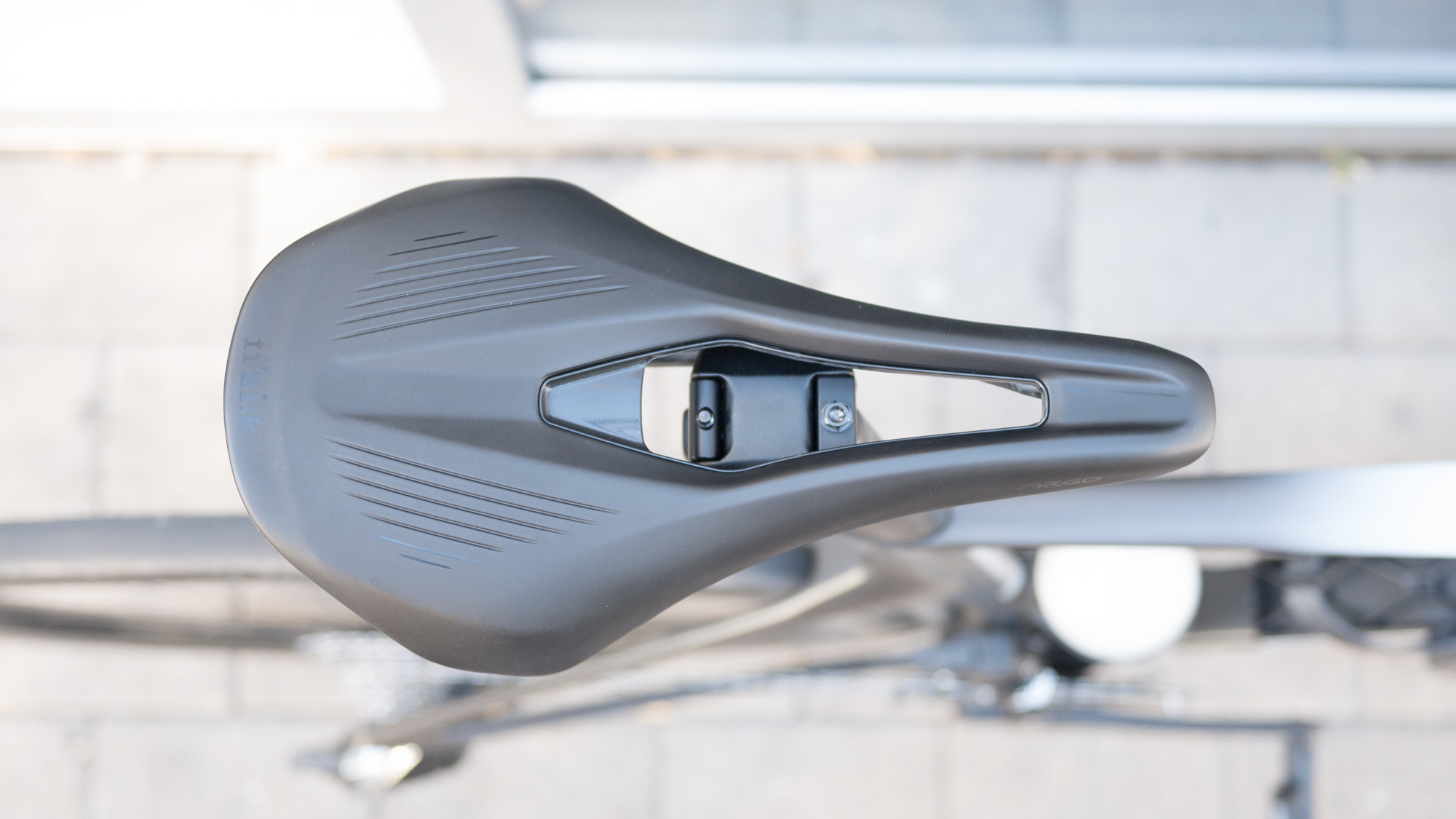
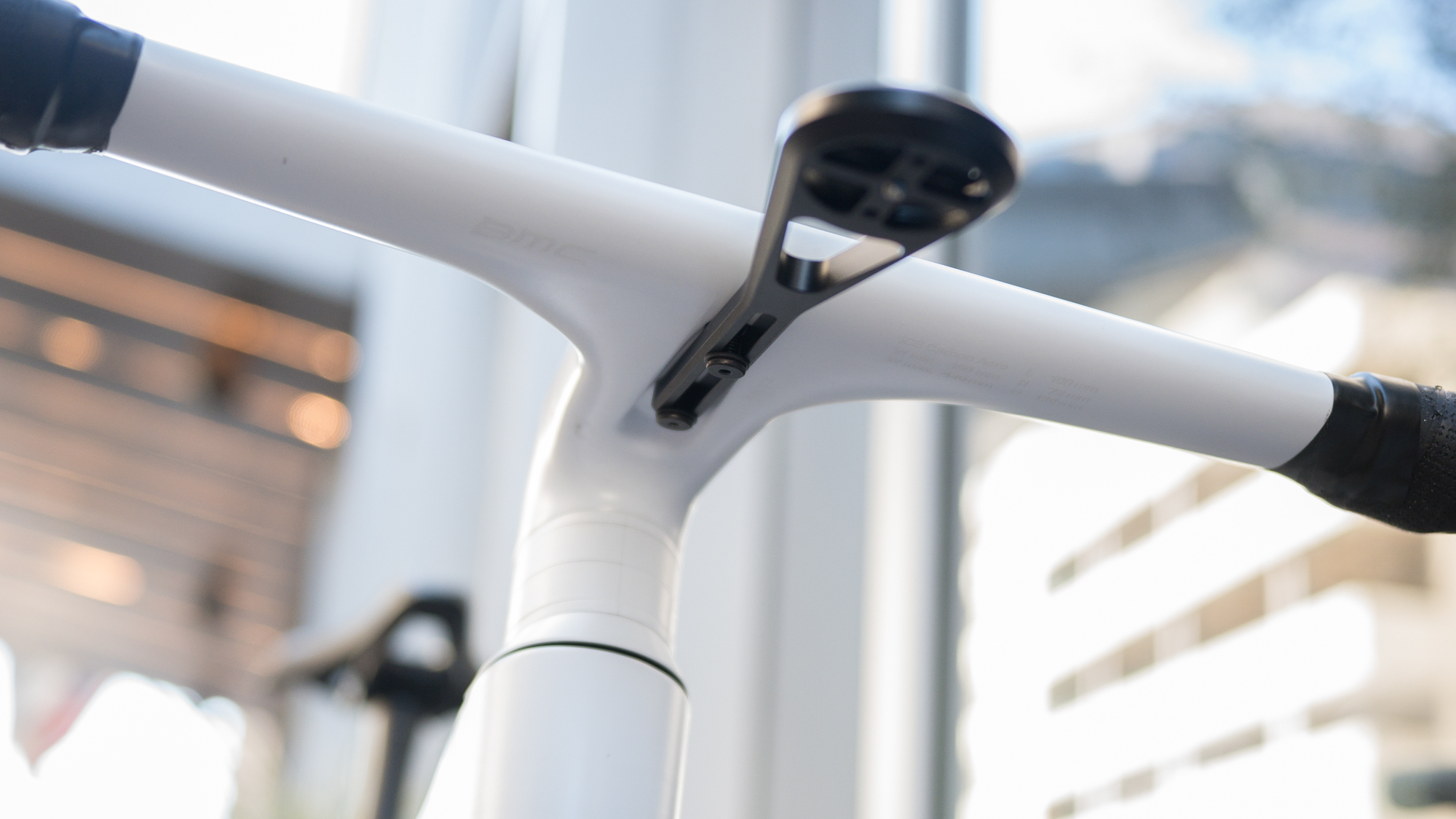
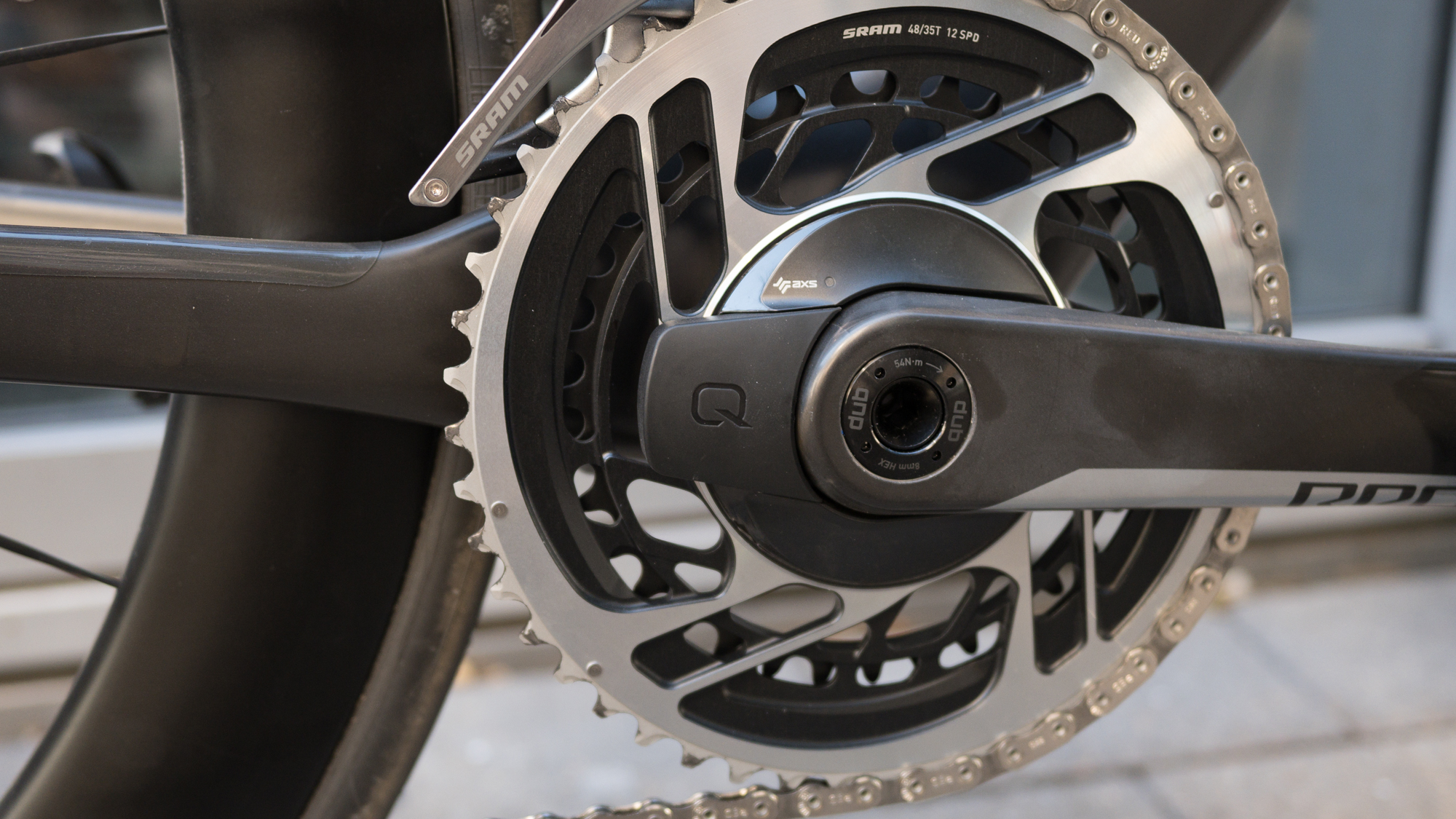
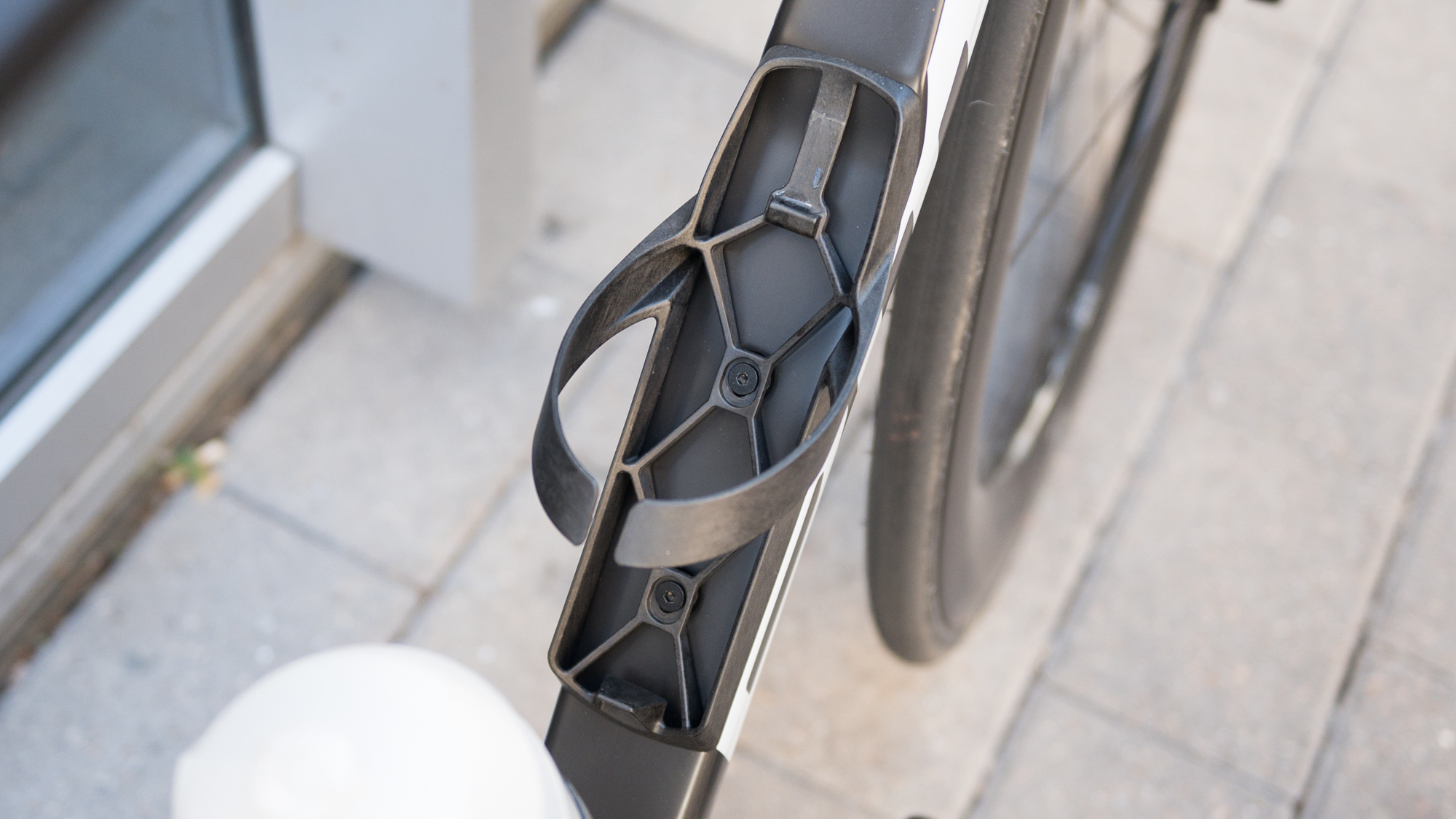
The build
The BMC Teammachine R is available with four build options plus the frameset. Depending on your build choice there are a couple of different colour schemes, though the frameset is only available in the same black and white as the Teammachine R 01 LTD.
As mentioned, my example was the Teammachine R 01 LTD which is the SRAM AXS RED build. Gearing is, as expected, a race focused 48/35T crank with a 10-28 cassette. What is notable about this setup is that the groupset includes the power meter with no additional purchase. While brands like Cannondale ship a "power meter ready" version of the groupset and ask that you spend additional money for a bike at this price level, BMC includes it. Not just on the 01 LTD either. You can find 4iiii cranksets on the Shimano builds and the SRAM Force power meter is part of the "Three" build.
Including the powermeter is a nice touch and it's not the only ready to ride feature in the build. The included saddle is the Fizik Argo Vento R1 and while saddles are personal, this is not a cheapy. The R1 is a carbon railed beauty that Fizik only surpasses by offering a 3D printed version. There's also the ICS Carbon Aero Cockpit 36cm bars and stem that you'll find on all but the "Four" build and an excellent quality proprietary outfront mount to go with it. The aero bottle cages are also included on this build as well as every other.
For wheels and tyres, you'll find the DT Swiss ARC 1100 62mm paired with Pirelli P-Zero Race SL TLR tyres in 26mm. The Arc 1100 is a 20mm wide internal width with a 27mm external and a combined weight of 1676 grams. Pirelli is also an RBAT partner so that's a nice touch but, more importantly, the combo apparently tests very well aerodynamically I'm told.
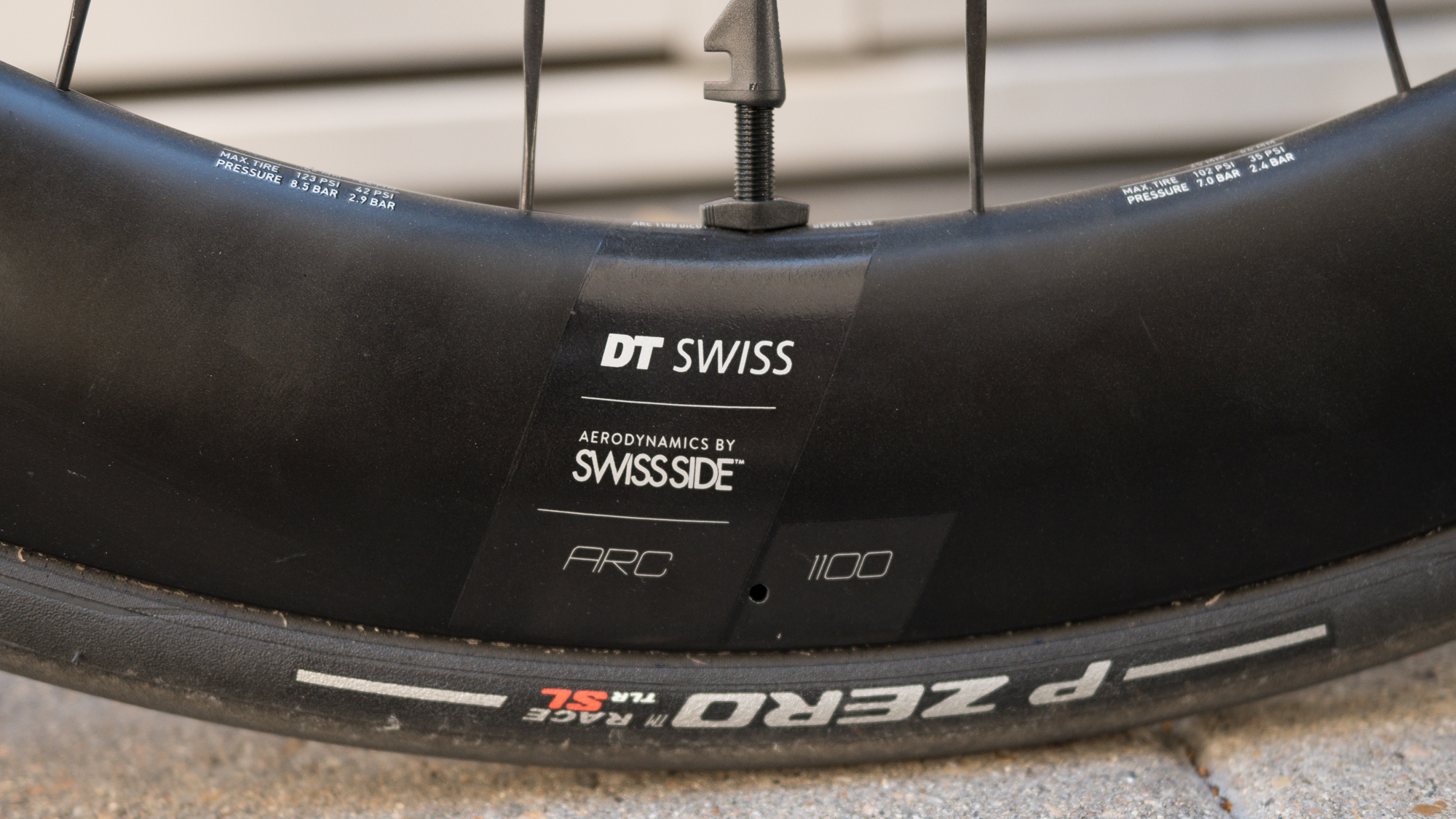
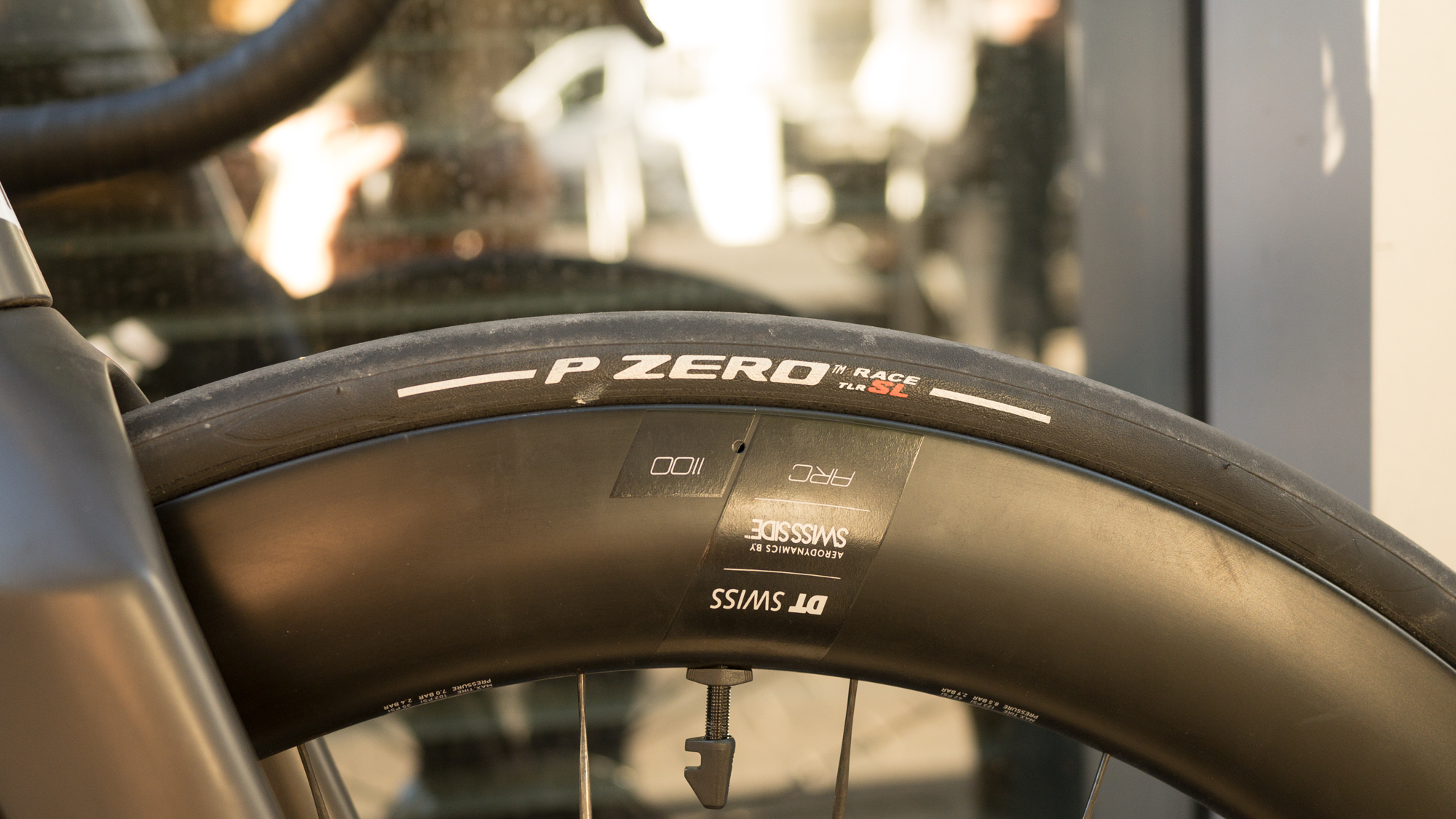
Performance
Everything about this bike is practically dripping with BMC marketing speak. The large bottom bracket shell isn't just highlighted as a feature, it shares a name with the Mariana trench to really drive home the point. The fork kind of looks like a part of an F1 car so it's the 'Halo' fork and the Red Bull Advanced Engineering partnership is highlighted at every opportunity. None of that really says what the bike is though.
BMC calls it the “ultimate race bike” and doesn’t want it called an aero bike. Let’s be real though, this is an aero bike. BMC is worried about making a connection to older generations of aero bikes but this is a modern aero bike. With a claimed chassis weight (frame, fork, handlebar and stem, and seatpost) of 1775 grams the Teammachine R is weight competitive with other bikes in this class and there’s enough compliance to keep it feeling comfortable for long rides.
The wheel choice that BMC has made on this bike further pushes the aero bike narrative. Unfortunately for BMC, the DT Swiss ARC1100 wheels are more reminiscent of the earlier aero bikes the brand would like to avoid drawing parallels with. At roughly 1700 grams they are light for a 62mm wheel but they aren't light. They are also a sharper "V" shape than newer designs and they are narrow. Zipp and Enve have wheels with a hookless 25mm internal width while the DT Swiss ARC 1100 is a hooked design that's only 20mm wide. That's then paired with a 26mm tire. Both BMC/RBAT testing and our own wind tunnel tests showed these are very fast wheels but they also very much pull the bike into the older style aero bike category.
What that means is that the wheels dominate the ride character. When you find yourself on relatively flat and straight roads, the Teammachine R is at home. Get down low, get your forearms parallel to the ground, and start pushing watts. You'll find yourself absolutely flying, even into a headwind. On relatively smooth pavement things are very good. You’ll notice the seatpost, and probably the layup as well, have enough compliance and the bars are comfortable with a solid computer mount and no bolt cover for sweat to hide under.
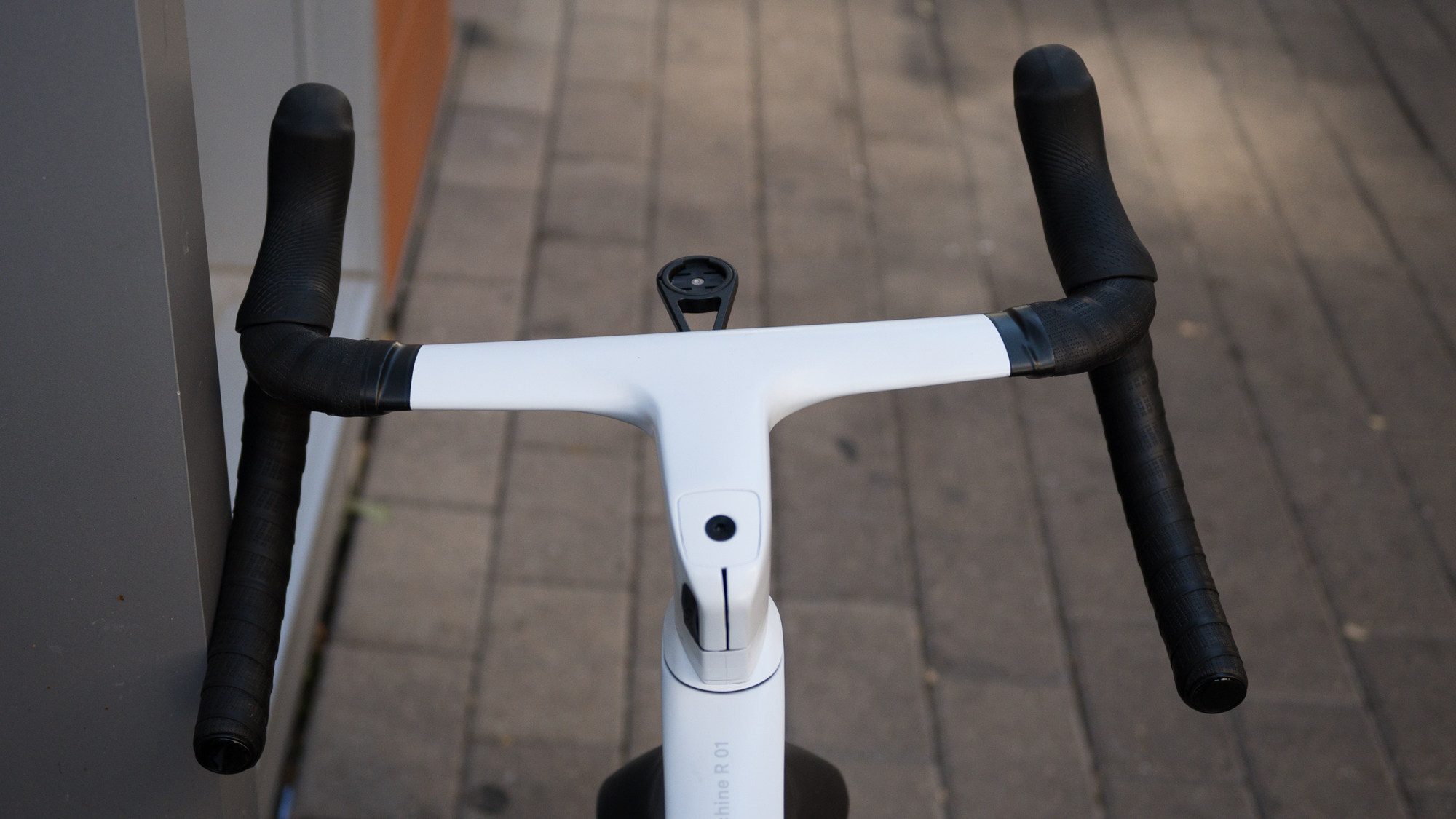
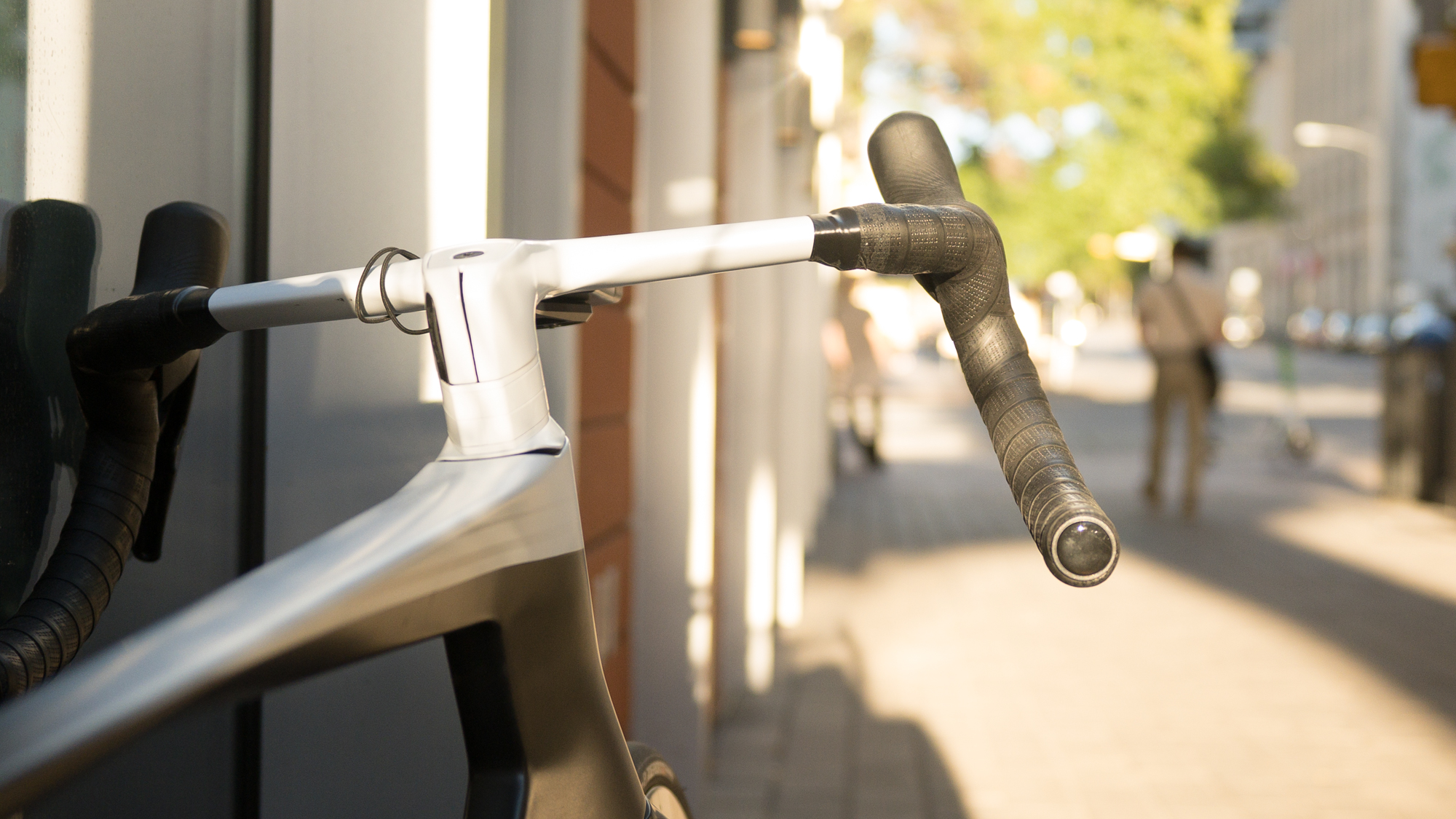
Things are different when you head for the hills or ride on chipseal. Almost 1700 grams doesn’t make for a great climbing wheel. This is hardly a heavy bike but the wheels don’t feel like your best climbing partner. They lack that quick responsiveness that you really want when it’s time to stand and move around on the pedals. On the upside, while I didn’t do a ton of descending, the heavier wheels did feel quite stable on descents.
When the road gets rougher, they aren’t all that great either. There’s less tyre volume than newer designs and they feel harder than you’d like. The frame is undoubtedly a next generation aero design but the wheels aren’t. If BMC wants to maximise aero performance with a deeper wheel, I’d love to see what this bike feels like with a set of Zipp 454 NSW wheels. I wouldn’t be opposed to Zipp 353 NSW wheels either though perhaps that’s asking too much for even a next gen aero bike.
Those are the wheels though and while that’s the nature of the build it’s not the core of the bike. I can’t say with 100% certainty this bike would transform with lighter, wider, wheels but based on the weight and geometry of the frame I feel pretty confident. What wouldn’t change is the narrow cockpit.
On the Kaius I thought those handlebars were a genius move and I generally feel the same way here. The biggest source of aerodynamic drag on a bike is the rider and nothing shrinks drag more than minimising the frontal area. A great way to accomplish that is to use narrow handlebars so speccing 36cm bars makes a lot of sense and I suspect that choice is responsible for much of the aero efficiency.
I’m a little less enamoured with the bars in this use but not because of the size. The 36cm width at the hoods paired with a 12.5-degree flare that brings the drops out to a 42cm width feels comfortable to me. What I found though was that on a fast handling road bike the narrow bars do take a little getting used to. I almost always ride on the hoods and in that position, the narrow bars exaggerate the already fast handling. I ended up spending more time on the drops and if this was my bike I might think about leaving a few spacers to keep the drops comfortable.
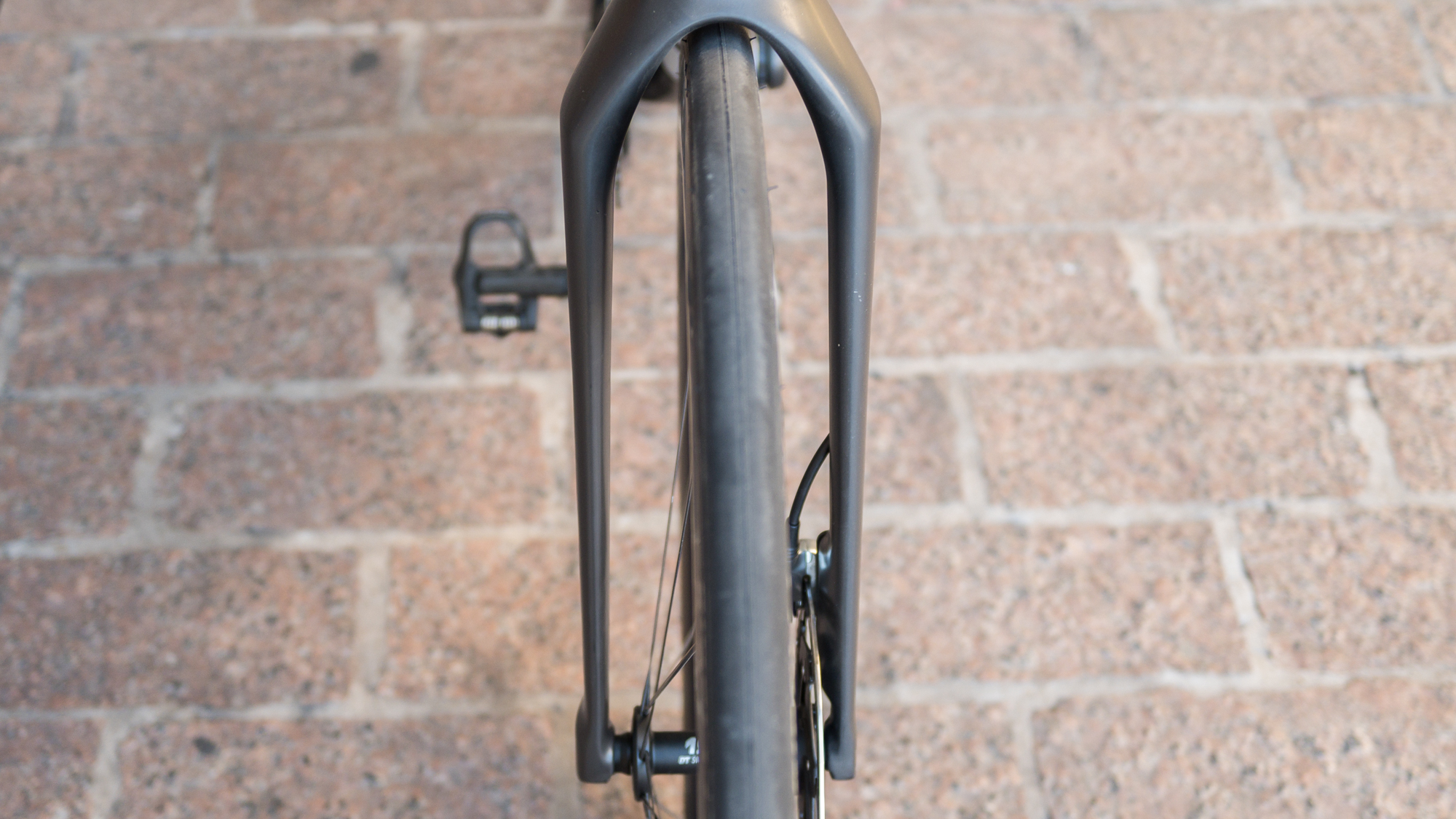
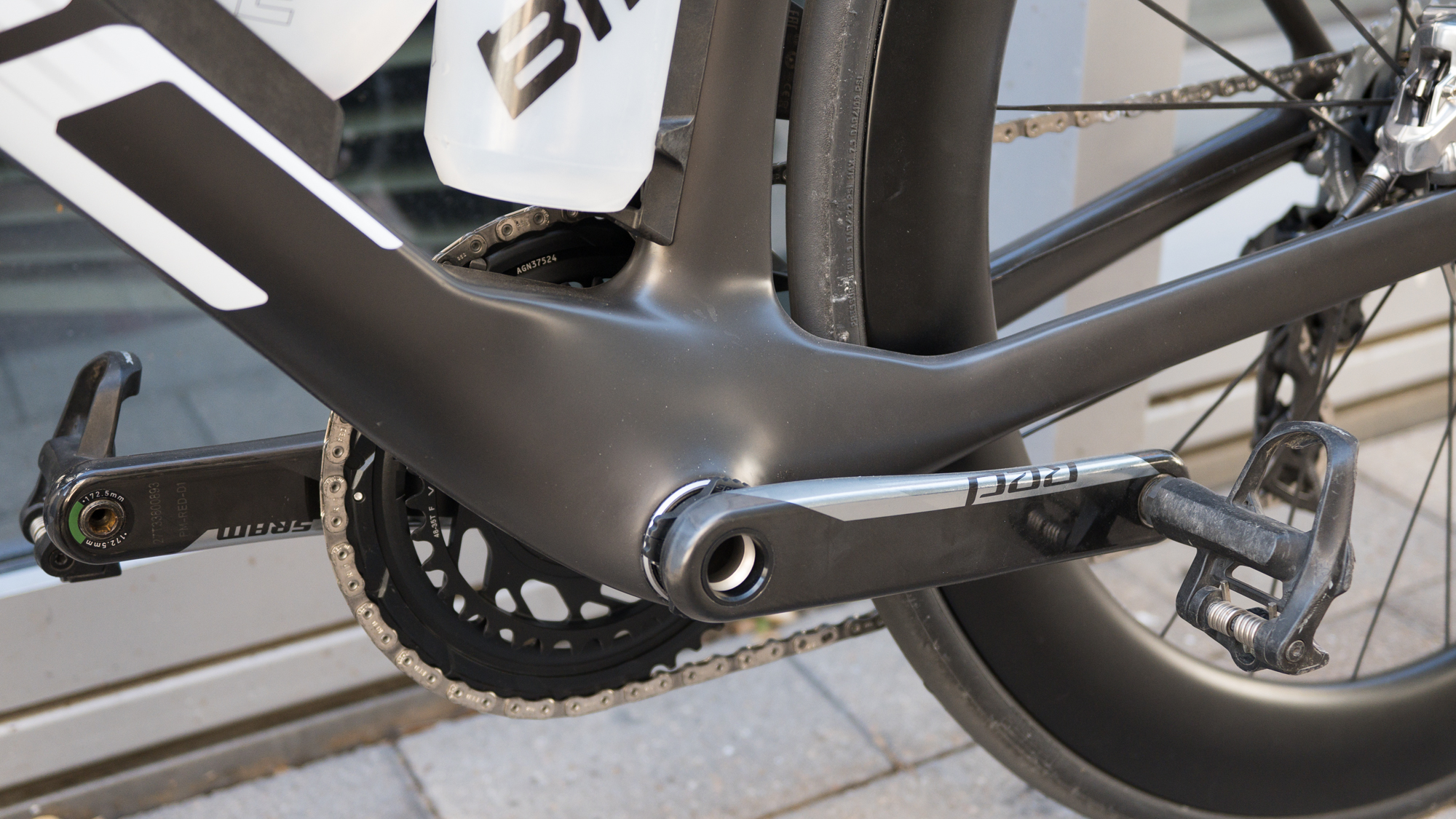
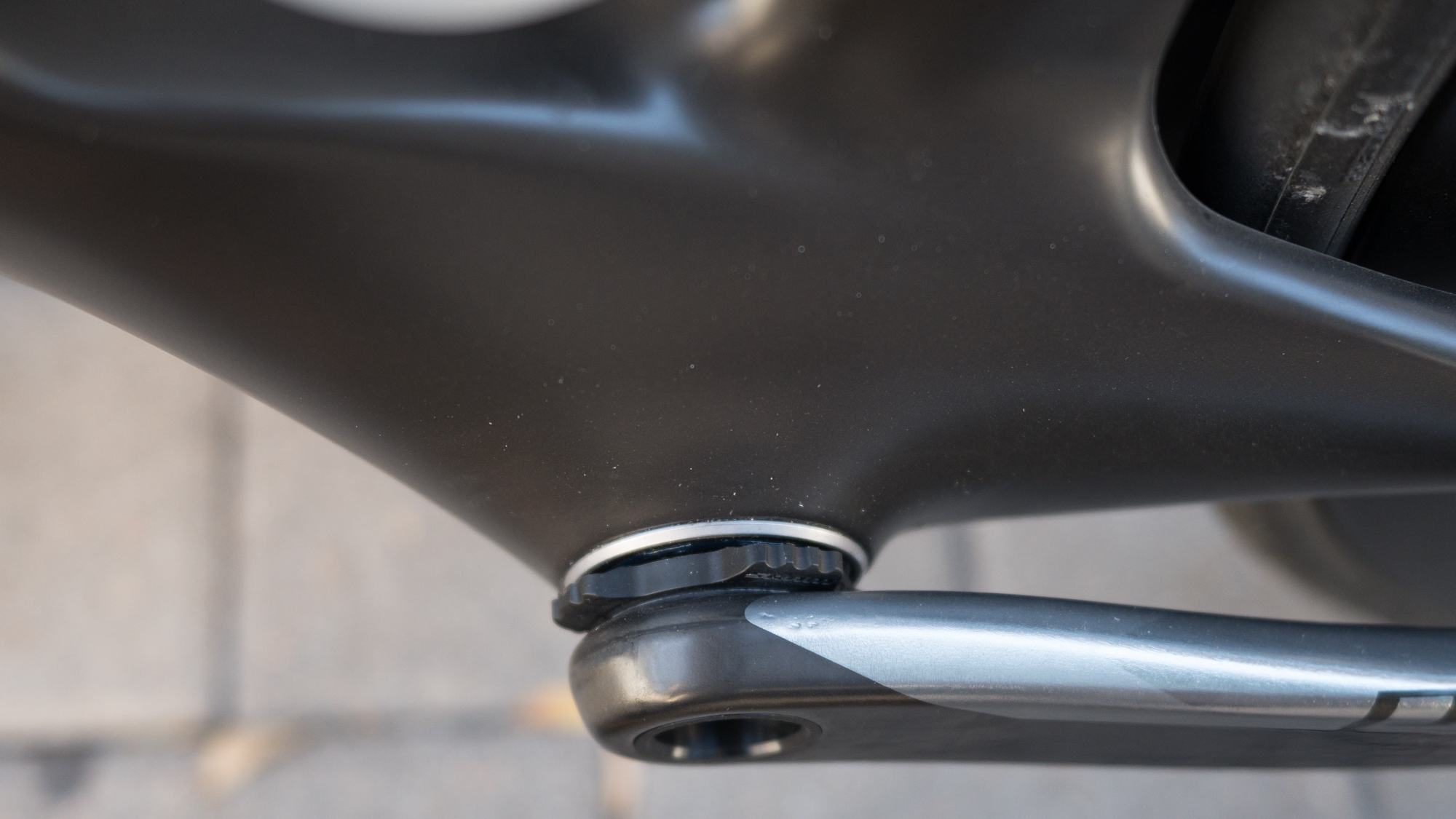
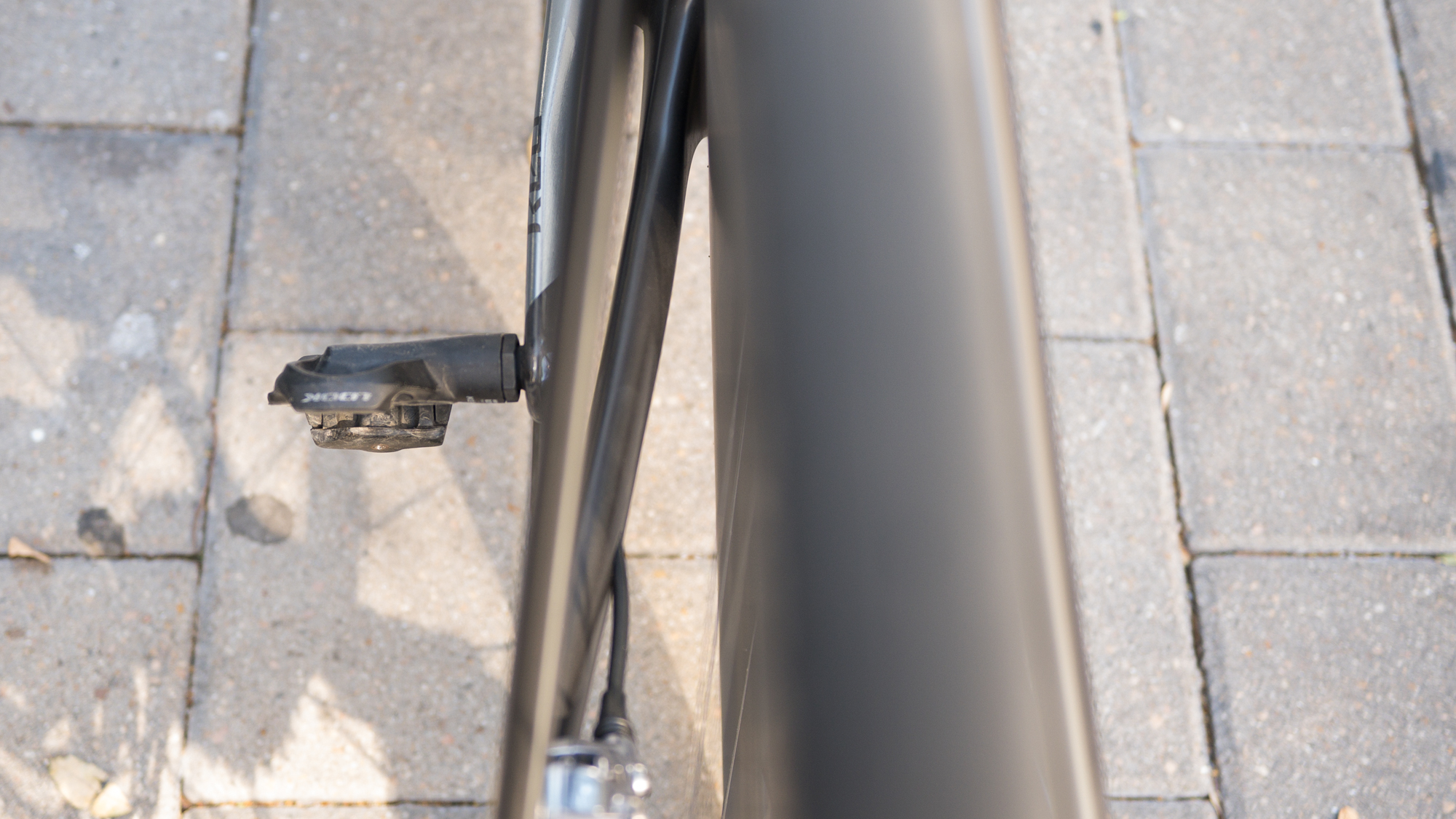
Value
The options at this price level are quite close. If you purchase the BMC Teammachine R 01 MOD will run $5999 / €5299 as a chassis. That comes in under the Cannondale SuperSix Evo Lab71 and about the same as the S-Works SL8 which is $5500 but without a bar and stem. It's a bit over the price of the Enve Melee and Look 795 Blade RS which are both sold for less money as a chassis.
If you decide to instead purchase as a complete build it's still quite close but things move around a little. The BMC Teammachine R 01 LTD costs €14,999 / $14,999 and, as mentioned, includes a quality saddle, a power meter, and even bottle cages you'll probably keep. That compares to the Enve which isn't available as the full build and the Cannondale at the same price but without a power meter and with a lower model saddle. The Specialized is the bargain here coming in $1,000 less and the Look is less money with more expensive wheels but it also lacks an included powermeter.
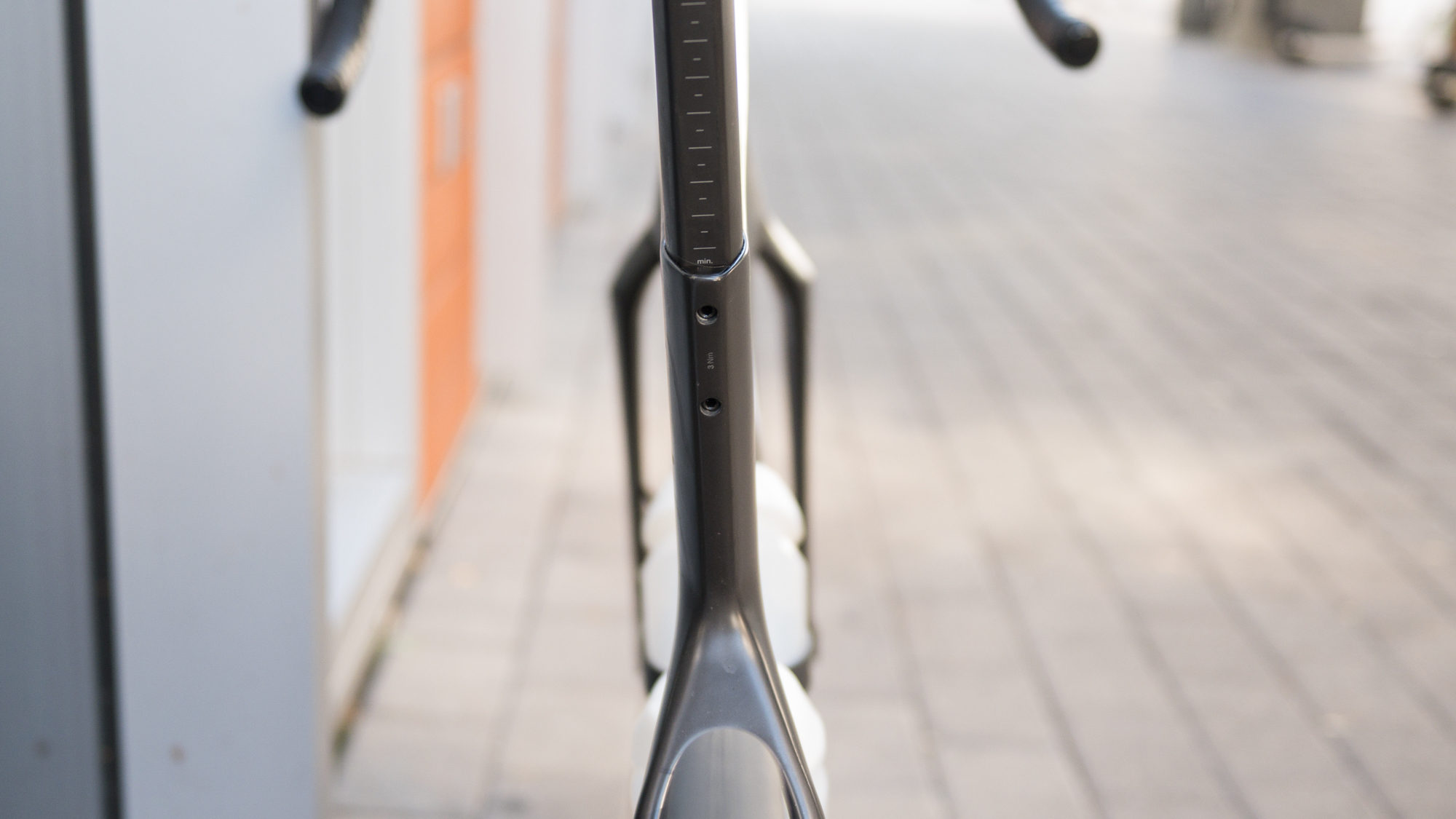
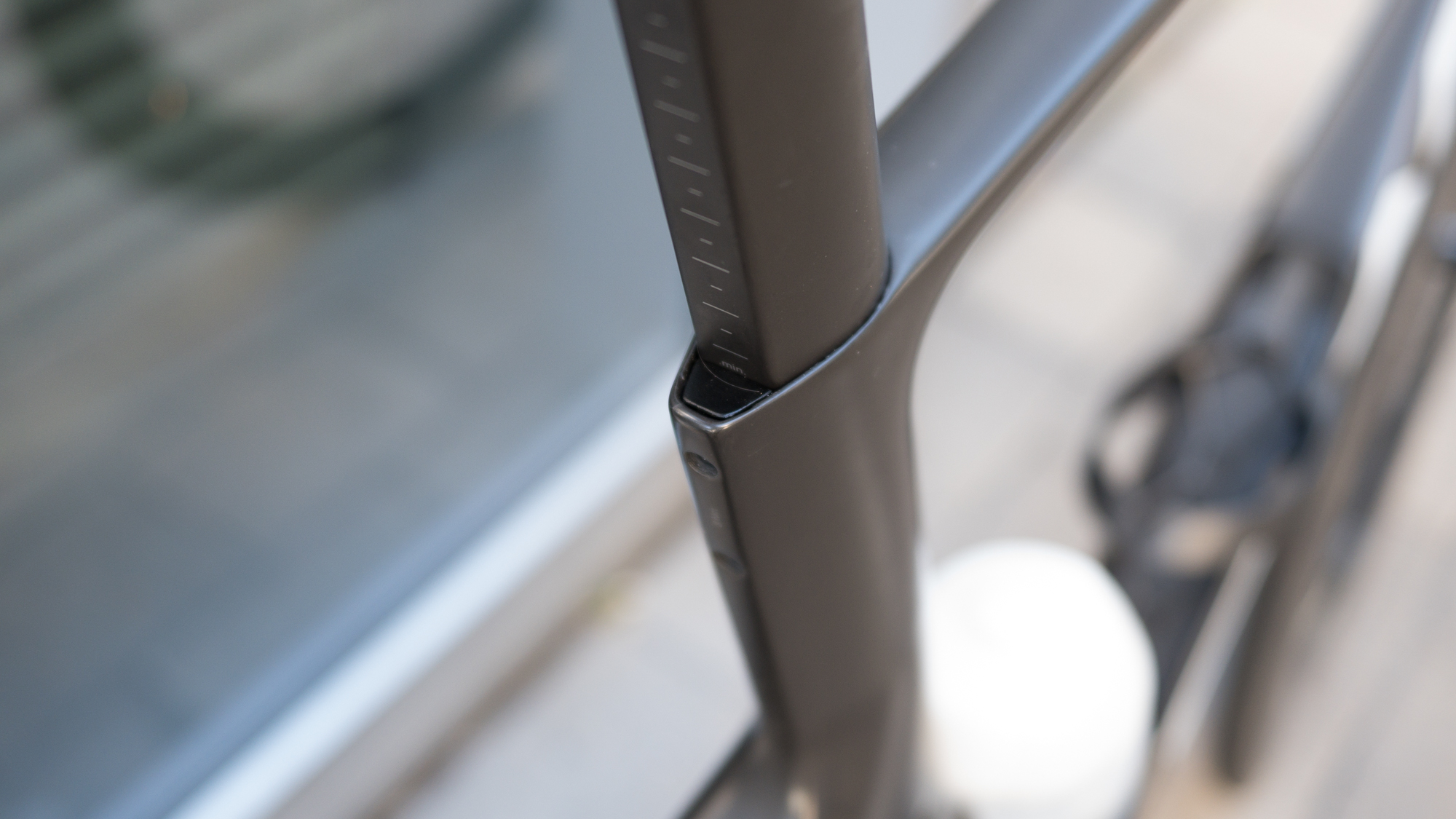
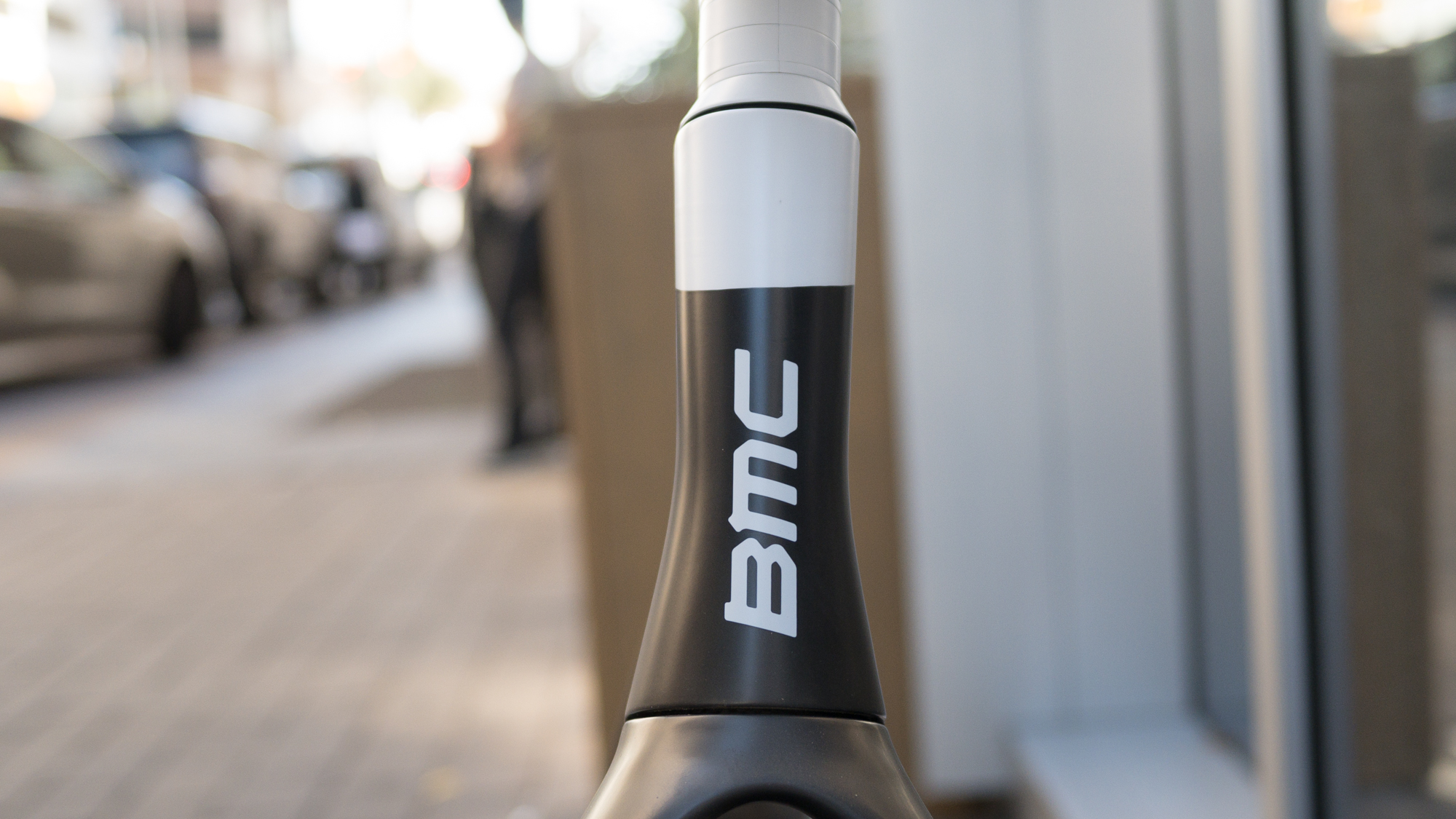
Verdict
If it sounded like my discussion in the performance section was negative, let me assure you it was not. The BMC Teammachine R is a fantastic bike that perfectly fits my riding personality. What I do best on a bike is get aero and go fast over long distances. The BMC Teammachine R is a perfect companion for that kind of riding and I had a blast putting it to use like that. I tested it in Austin Texas where the roads are flat and if you hunt for climbs they are short. Over and over I found myself with a huge grin on my face as the group lined up behind me and I pushed into the wind until I couldn’t. If you also like that kind of riding, you are going to love this bike.
There are some caveats though. You might find yourself on the drops more than the hoods even if you generally prefer the hoods. You might also want to consider if the wheels included on this build are going to be right for your use. I love that the build includes a high-quality saddle and a power meter, so that it’s actually ready to ride as is, but the wheels have a very specific character. If you want to go fast on the flats, they are perfect. If you want to run wider tires and use this bike to climb as often as attempt breakways then you’ll want different wheels and you might consider starting with a frameset.
Compared to the other super bikes I’ve been on lately, I still offer that this is your best choice for flat and fast. The Enve Melee has more compliance and is the bike you want for occasional light gravel plus a great long distance adventure choice. The Cannondale SuperSix Evo is the efficiency king with an otherworldly ability to hold high speeds but it’s more expensive and the cockpit is less appealing. Finally, the Look 795 Blade RS is much stiffer and a better climber but likely less aero.
| Design and aesthetics | There are no exciting paint options and aesthetically this is not the most exciting bike. The upper top tube fade is lovely but you’ll want to fall in love with the engineering of this bike. | 7/10 |
| Build | There’s a mis-match between the stated purpose and the build but take that away and the build is perfect. As long as you understand this is a flat and fast bike you can buy this build and start riding without changing a single thing. | 10/10 |
| Performance, handling and geometry | The trade off to the perfect build for flat and fast is a loss of all-around performance. As is, this is a fast bike but it’s not the best climbing bike or the best when the pavement gets rough. | 8/10 |
| Weight | Within a few grams of every competitor. It’s not a bike designed for exceptional lightness but it’s hardly heavy. | 8/10 |
| Value | A solid B performance again. Including high-end pieces on the build adds value but there are cheaper bikes at this level. | 9/10 |
| Overall | Row 5 - Cell 1 | 82% |
Josh hails from the Pacific Northwest of the United States but would prefer riding through the desert than the rain. He will happily talk for hours about the minutiae of cycling tech but also has an understanding that most people just want things to work. He is a road cyclist at heart and doesn't care much if those roads are paved, dirt, or digital. Although he rarely races, if you ask him to ride from sunrise to sunset the answer will be yes.
Height: 5'9"
Weight: 140 lb.
Rides: Salsa Warbird, Cannondale CAAD9, Enve Melee, Look 795 Blade RS, Priority Continuum Onyx
